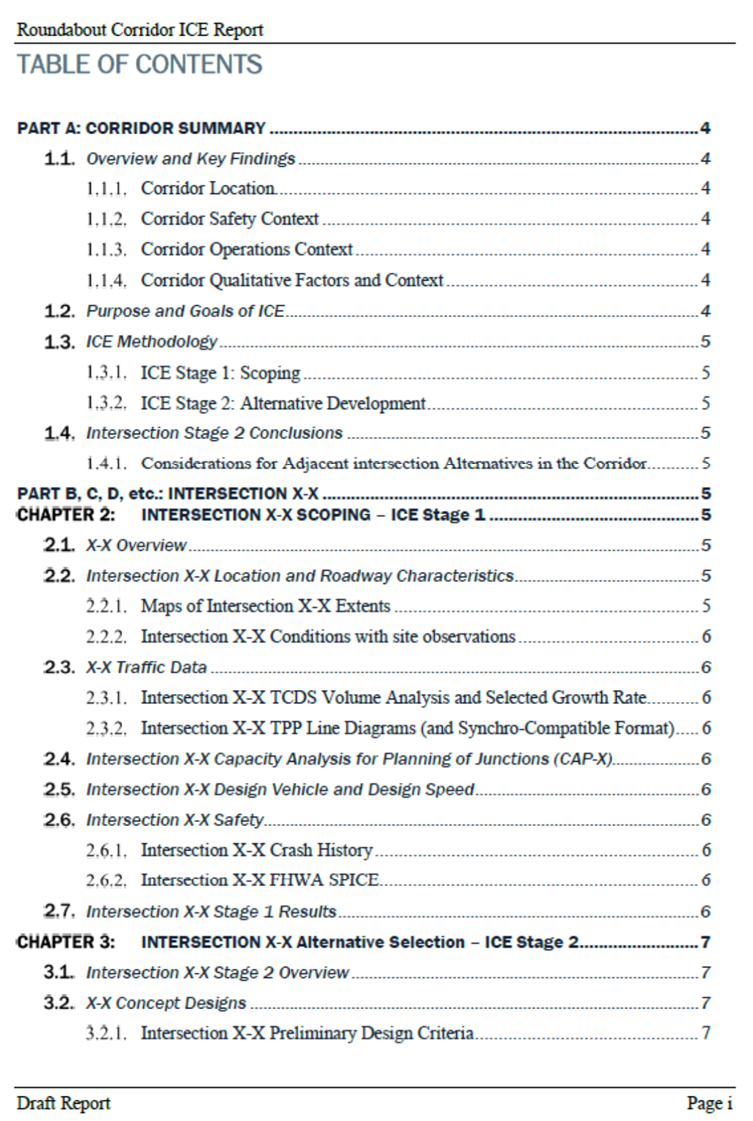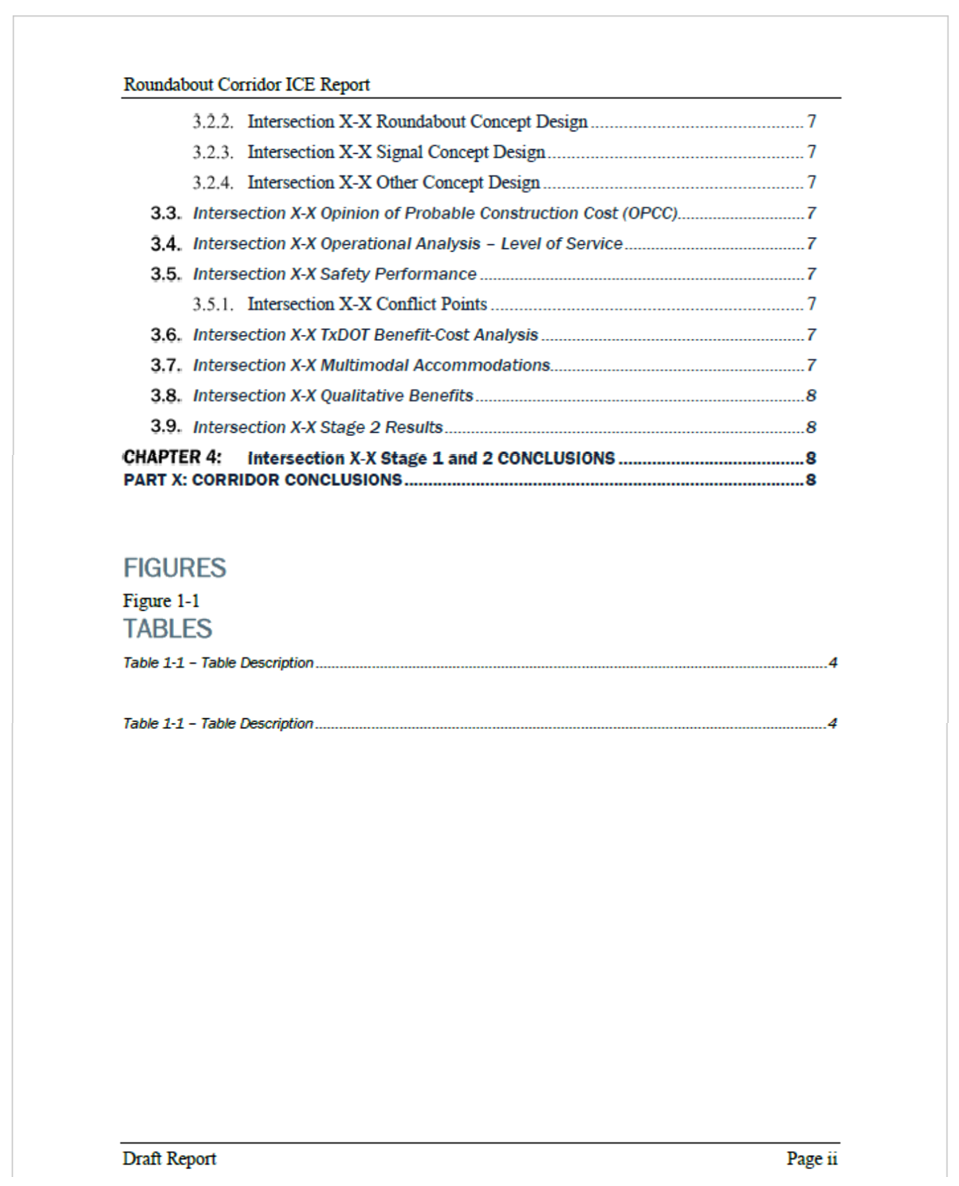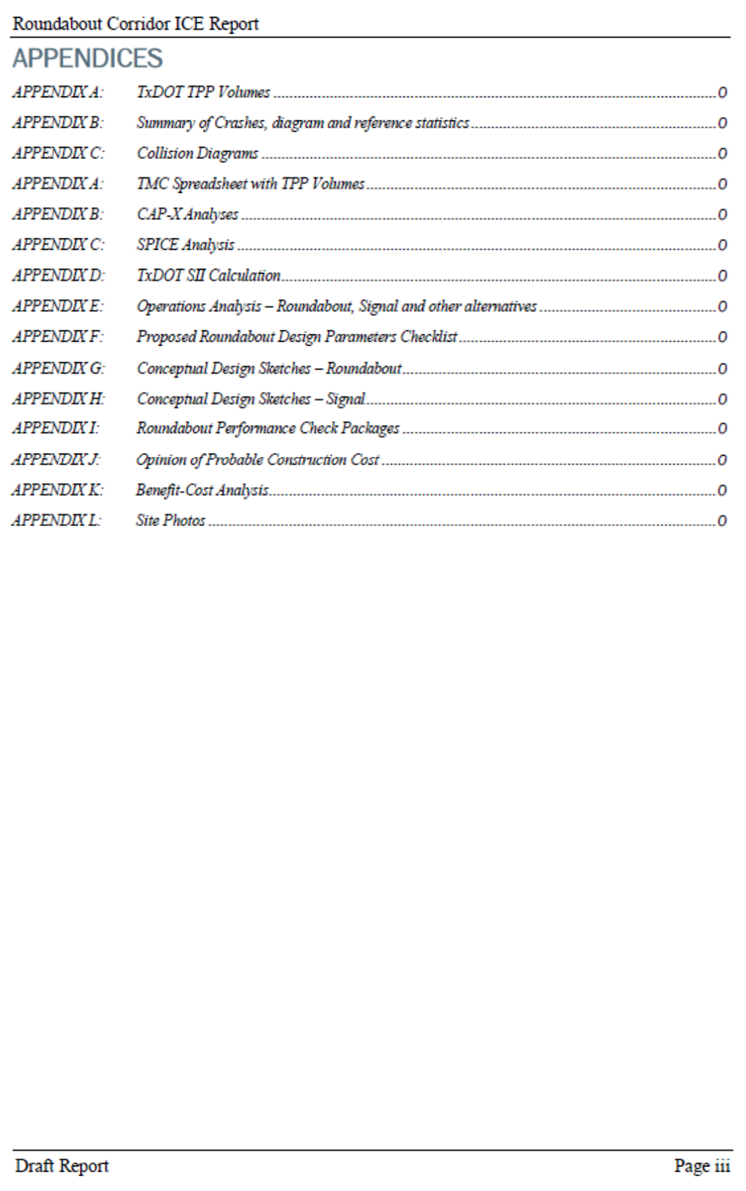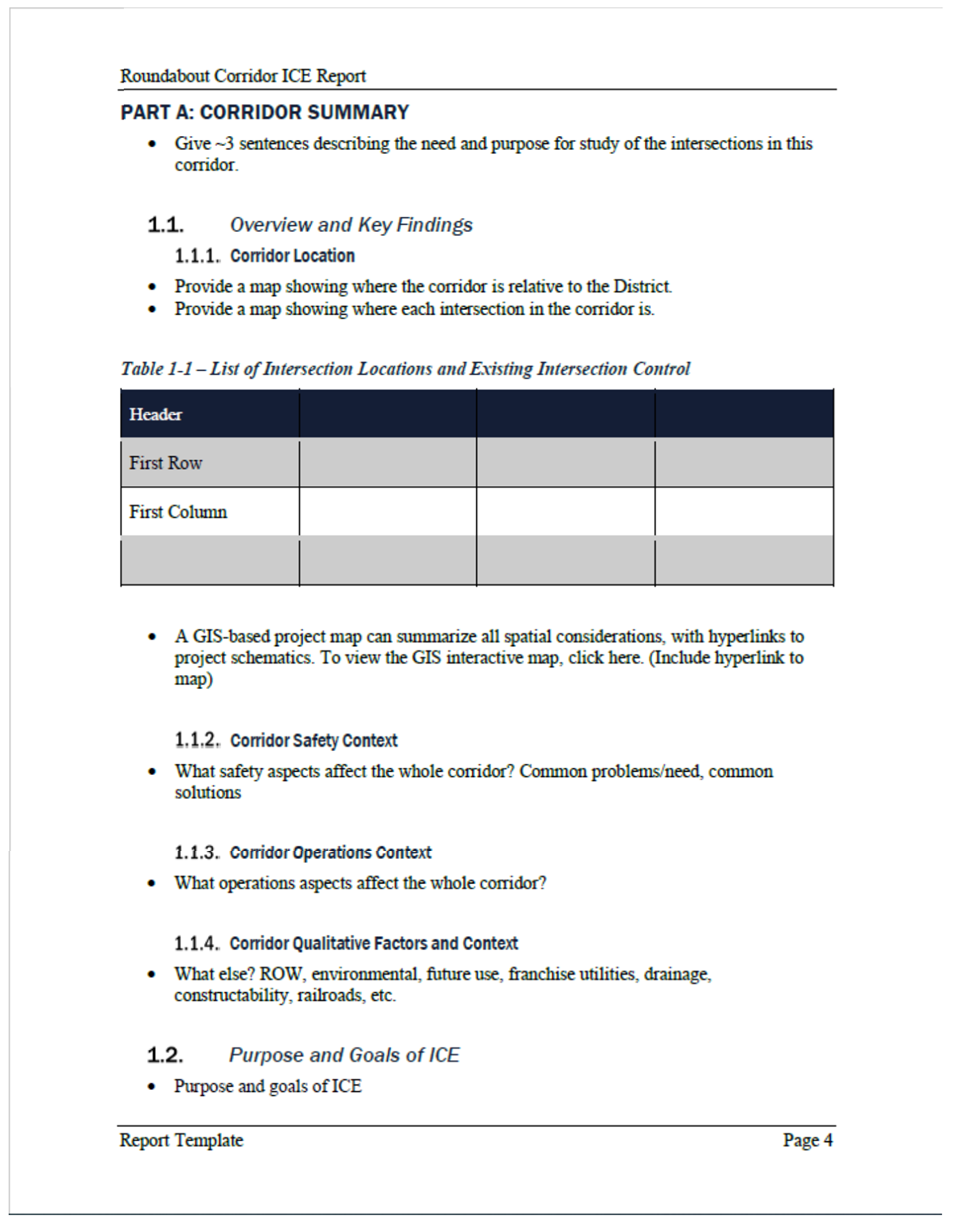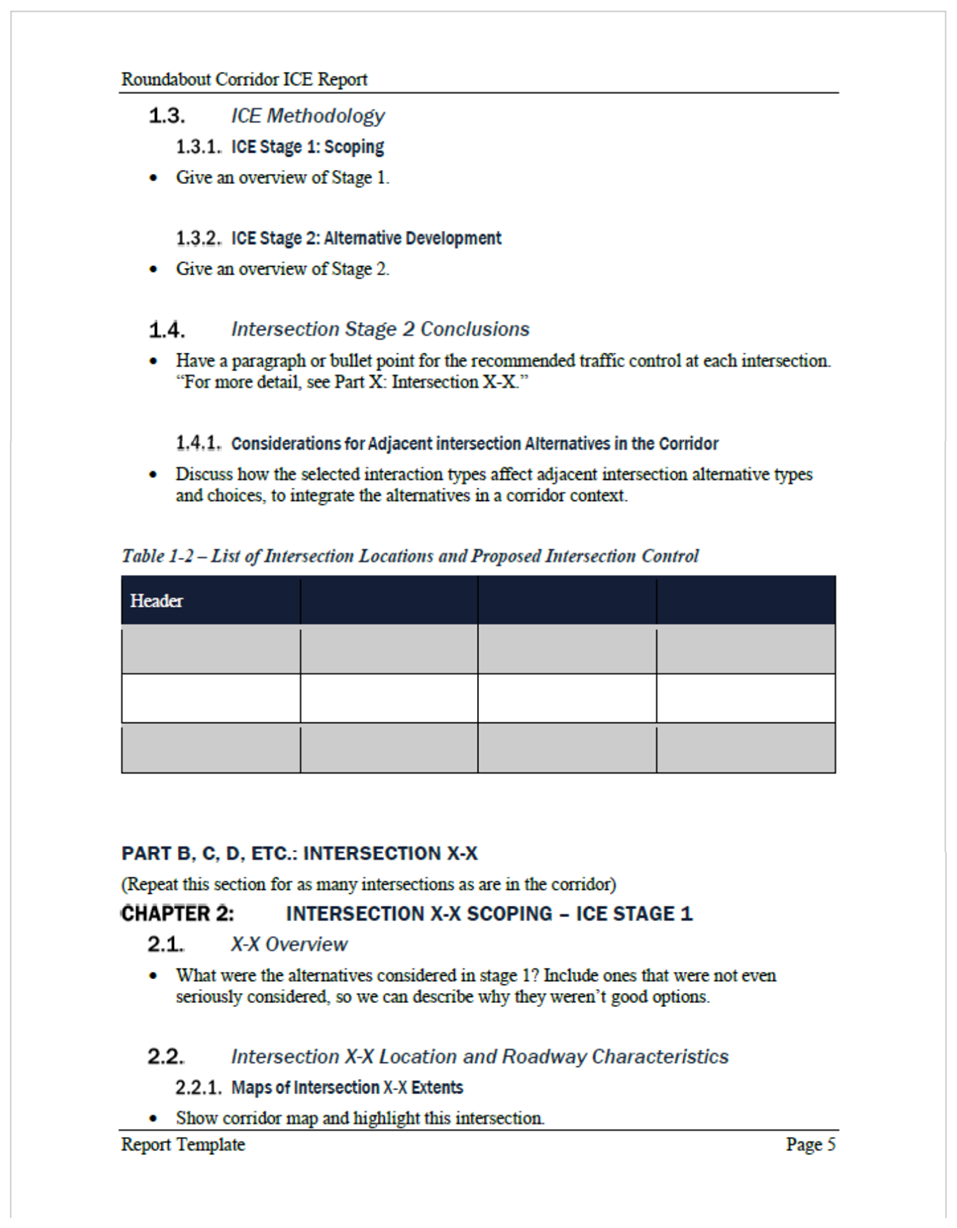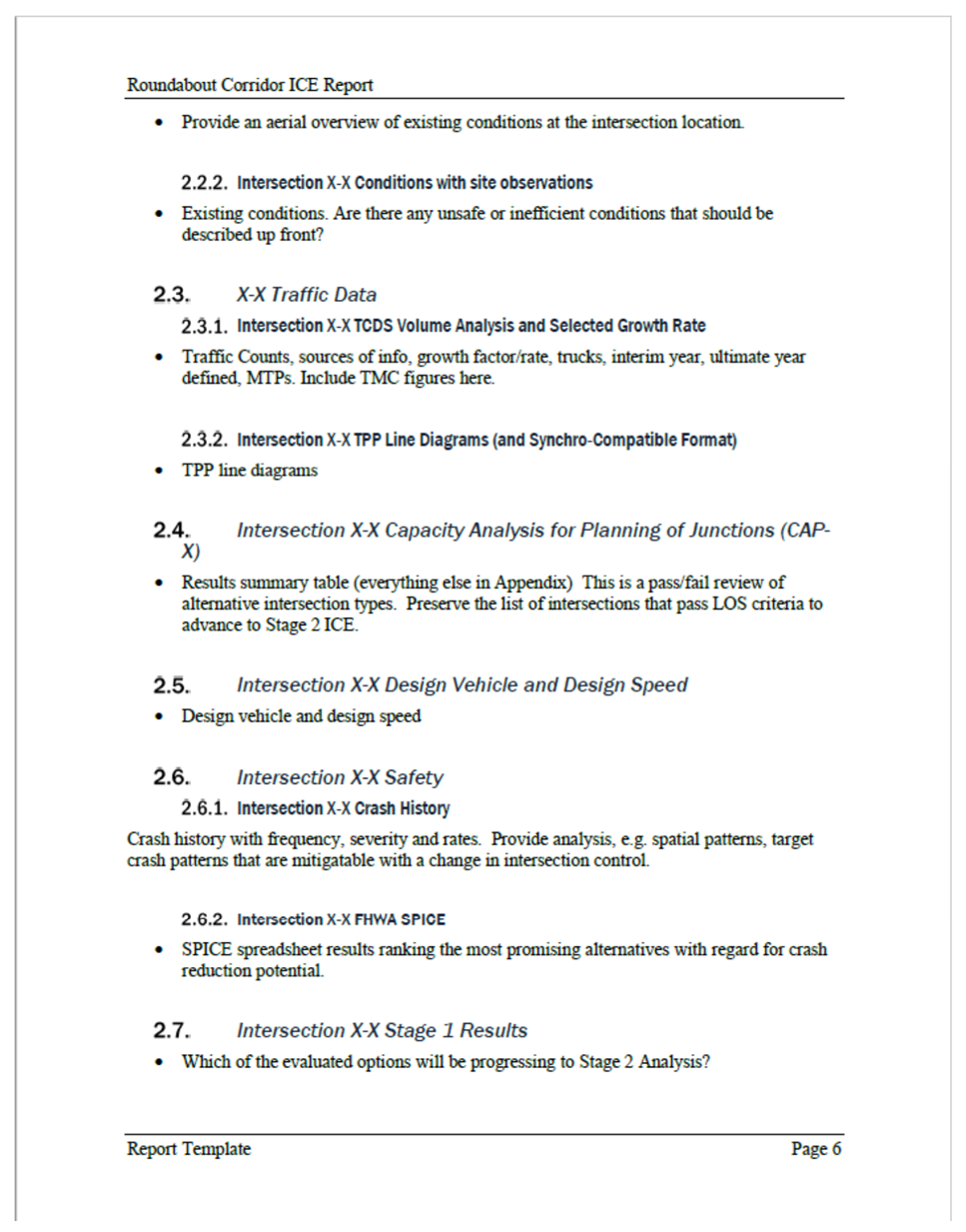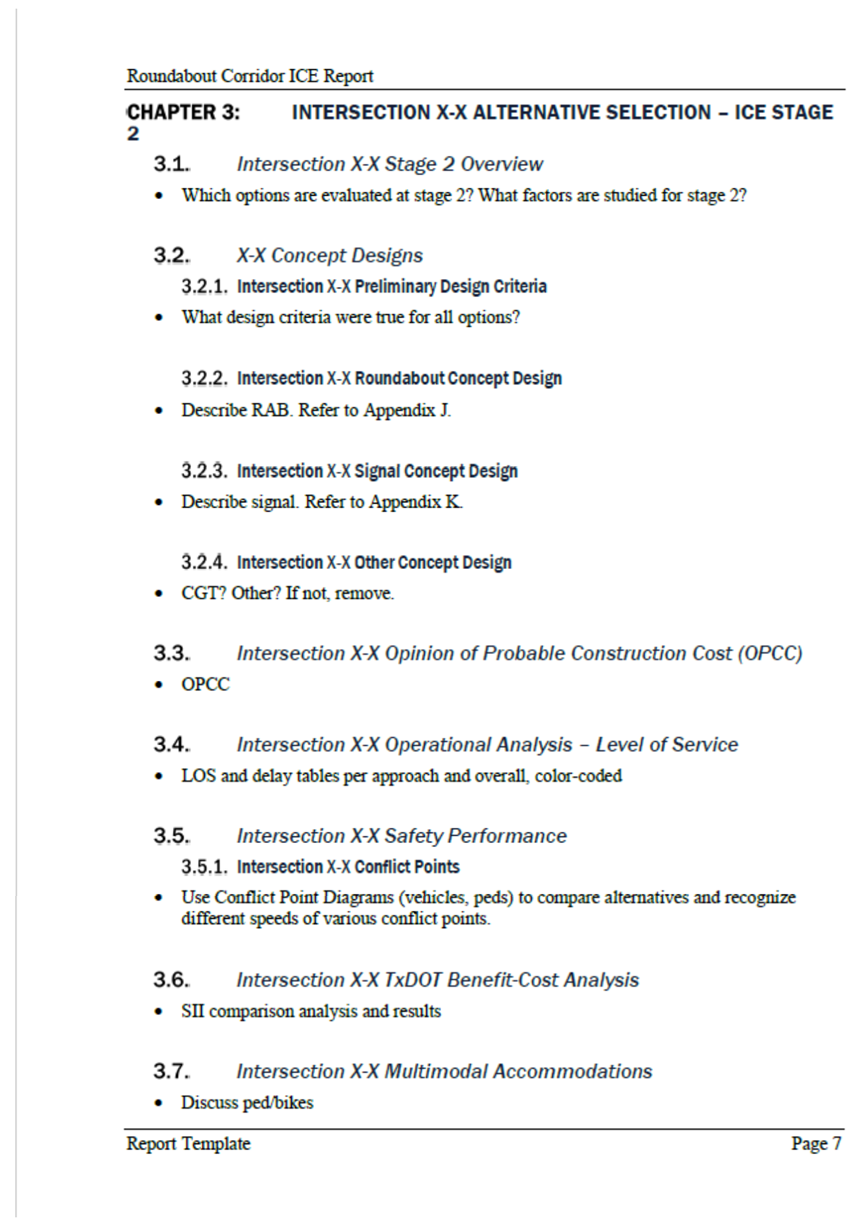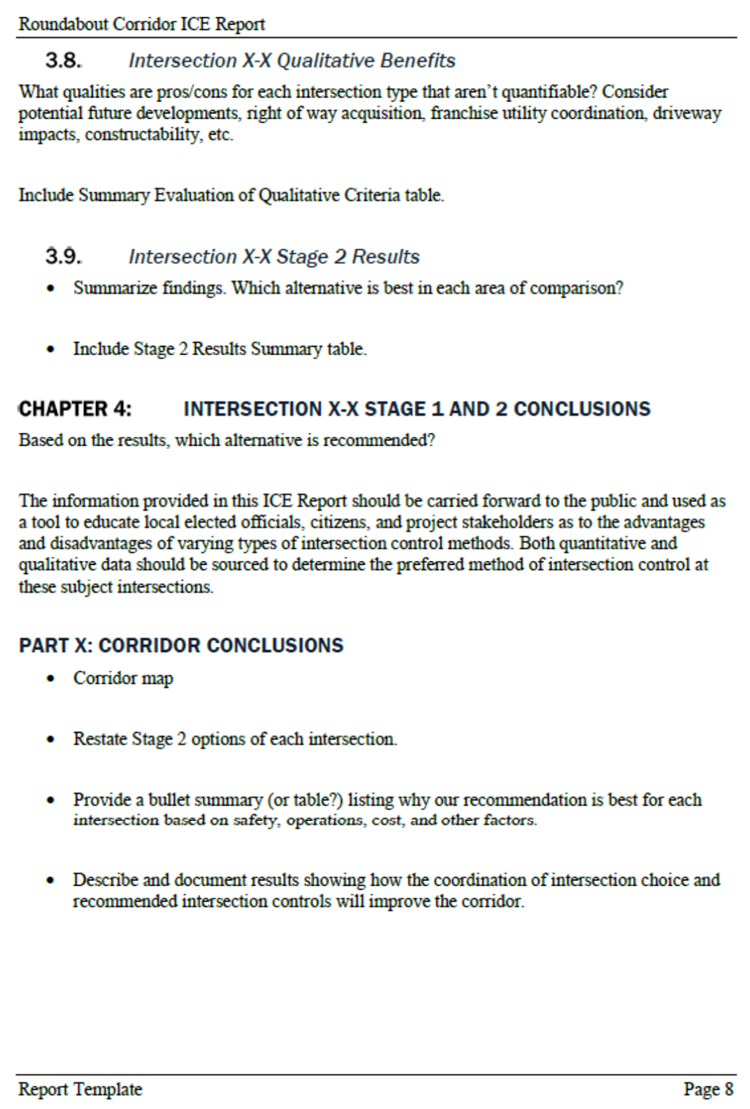Section 1: ICE Report Outlines
Stage 1 ICE Example
Coordinate with the TxDOT Project Manager to determine the level of effort and scope of the ICE.
Below is an abbreviated version of an ICE report. It covers the Stage 1 requirements and generates a preferred type of intersection control without requiring more detail that Stage 2 generates. When both the safety (SPICE) and operations (CAP-X) analyses generate a clear preference for intersection control, Stage 2 ICE investigation is not necessary, and the project can proceed to concept design and detailed cost estimation.
Location: US 123 at CR 456
Background:
- A local agency is proposing intersection improvements. They submitted a white paper to the TxDOT area office, justifying a roundabout.
- White paper was forwarded to TxDOT Design Division Roundabout and Alternative Intersection Design (RAID) for review.
FHWA SPICE Tool:
Assumptions:

- Kept all default settings, no calibration of SPFs or CMFs
- AADT: no consistent AADT provided - used peak hour volumes from combined spreadsheet (TIA Analysis) to extrapolate to an ADT and use as AADT to input in the tool:

Total Entering Volume (TEV) =
US 123 | CR 456 | |
AM | 1,522 | 728 |
PM | 1,479 | 996 |
Assume*:
ADT = TEV/f
f = 8% to 12%
US 123 ADT =
Average =
1522/.08 = 19025 | 1479/.08 = 18487 |
1522/.12 = 12683 | 1479/.12 = 12325 |
15,630
CR 456 ADT =
Average =
728/.08 = 9,100 | 996/.08 = 12,450 |
728/.12 = 6,067 | 996/.12 = 8,300 |
8,979
SPICE Results:

SPICE Summary:
Lowest Total Crashes:
- (1.55) Unsignalized RCUT(2.38) Minor Road Cut - don't count per red "No" in table
- (2.53) 1-lane roundabout
- (2.76) 2-lane roundabout
Lowest Fatal & Injury Crashes:
- (0.33) 2-lane roundabout
- (0.45) Unsignalized RCUT
- (0.51) 1-lane roundabout
Highest Total Crashes:
- Traffic Signal
- Displaced Left-Turn
- MUT and Signalized RCUT
Highest Fatal & Injury Crashes:
- Traffic Signal
- Displaced Left-Turn
- Signalized RCUT
FHWA CAP-X Tool:
Assumptions:
- Used peak hour volumes from combined spreadsheet (CR 456 TIA Analysis)
- Did not analyze intersection types not included in SPICE tool (such as Quadrant Road)
- Kept all default factors.
Results:

Summary:
- Only two intersection types under 1.0 V/C Ratio:DLT and 2 x 2 Roundabout
- Three intersection types very close to 1.0 V/C Ratio:
- Signalized RCUT
- Multi-lane roundabout (1 lane north-south, 2 lanes east-west)
- MUT
Summary of SPICE and CAP-X Analysis:
- A 2 x 2 roundabout may provide the best combination of safety and capacity.
- A DLT may provide the best capacity but has one of the highest levels of total crashes and fatal/severe crashes.
- An unsignalized RCUT has the lowest total crashes, but has a very poor V/C ratio (1.65)
- A multi-lane roundabout (1 lane north-south, 2 lanes east-west) is just over 1.0 V/C (1.05) but provides high safety benefits and would be worth consideration.
Comments on White Paper and Roundabout Design:
- Traffic
- Recommend developing design-year traffic projections - 10 year and 20 year and evaluating roundabout performance for each.
- Recommend a review of proposed lane configuration based on traffic analysis.
- Design
- Design shows geometric problems (listed below) – recommend local agency gets a peer review of the roundabout traffic analysis (for lane configuration) and geometric design.
- Exhibit does not give any dimensions, so a review of roundabout size and other geometrics is limited - request a more detailed schematic that includes the following:
- Roundabout key dimensions (ICD, entry & exit flare widths, typical lane widths, deflection, and entry curve radii, circulating lane widths, truck apron widths, pedestrian refuge island widths)
- Striping
- Sidewalk widths
- Vertical profiles and roadway cross slopes
- Striping as shown does not make sense - circulatory stripe touches the top of the west leg splitter island so lane configuration is unclear.
- Limited-to-no deflection on west and south legs - provide better speed control.
- Exhibit cuts off north leg, so review not possible.
- Pedestrian crossings are too far back - place them 20' back from circulatory roadway.
- Recommend documenting and reviewing roundabout performance measures:
- Fastest paths - plan view and radius/speed calculations
- Truck turning movements - design and check vehicle - plan view.
- Path-overlap check for multilane entrances.
- Sight distance triangles and calculations
- Sidewalk widths seem narrow to be considered a shared use path, but dimensions not so. If less than 10’, need to identify bicycle facilities.
- General comment:
- Recommending construction in 2024, but ROW acquisition may slow that down.
Review Summary:
- Based on high-level analysis, a 2-lane roundabout will likely provide the best combination of safety benefits and capacity, and a multi-lane roundabout (1 lane north-south, 2 lanes east-west) would also be worth consideration.
- The roundabout design needs to be looked at much more closely - first on lane configuration based on traffic analysis, and second on the geometrics. Poor lane configuration and/or design may result in a less-than-optimally functioning roundabout.
Full Report Outline
- Executive Summary
- Introduction
- Purpose and Need
- Background
- Existing Conditions
- Collected Data
- Analysis Years
- Growth Rate (as applicable)
- Intersection Control Types and Alternatives under Consideration
- Assumptions for each Intersection Type
- Analysis of Control Types and Alternatives
- Operational Analysis
- CAP-X Results
- Detailed Analysis Results (optional)
- HCS, Synchro, Vissim, SIDRA (as applicable)
- Safety Analysis
- Historical Crash Analysis
- Intersection Crash Rate
- Collision Diagram
- Predictive Crash Analysis
- Applicable HSM SPFs and CMFs
- SPICE Results
- Multimodal Analysis
- CAP-X Results
- Detailed Analysis Results (optional)
- HCS, Synchro, Vissim, Sidra (as applicable)
- Other Considerations
- Applicable Warrants, Right-of-Way Needs, Environmental Risks, LongRange Plan Consistency, Stakeholder and Public Concerns (as applicable)
- Cost Benefit Analysis
- OPCC, Life Cycle Cost, SII (as applicable)
- Conclusion
- Summary and Comparison of Alternatives
- Intersection Control Recommendation
- Justification
Appendix
- Traffic Count Data
- Crash Data
- Analysis Reports (CAP-X, HCS, Synchro, Vissim, SIDRA, SPICE)
- Cost Benefit Analysis Reports
Full Report Example

